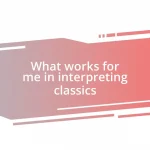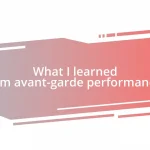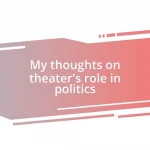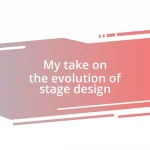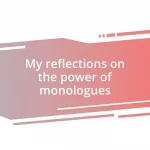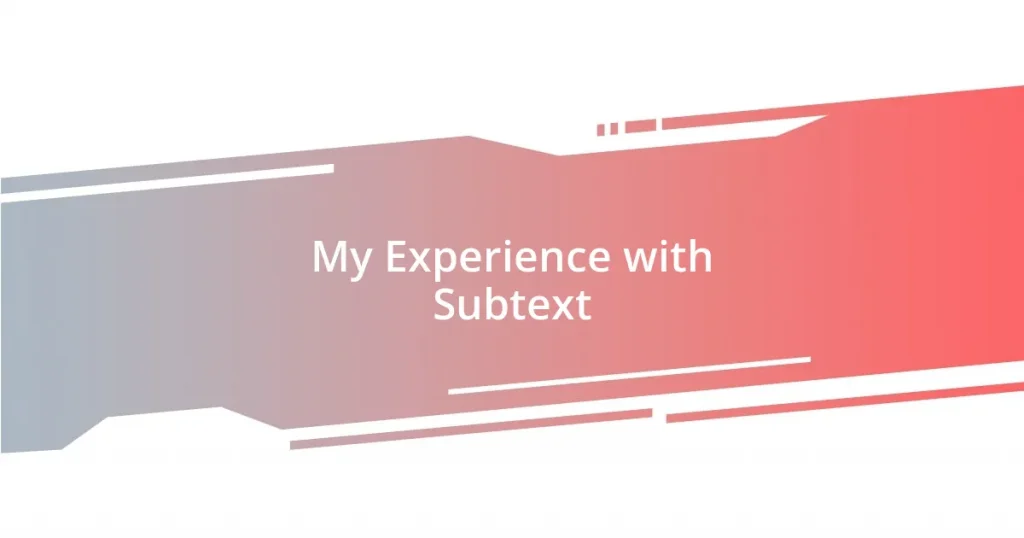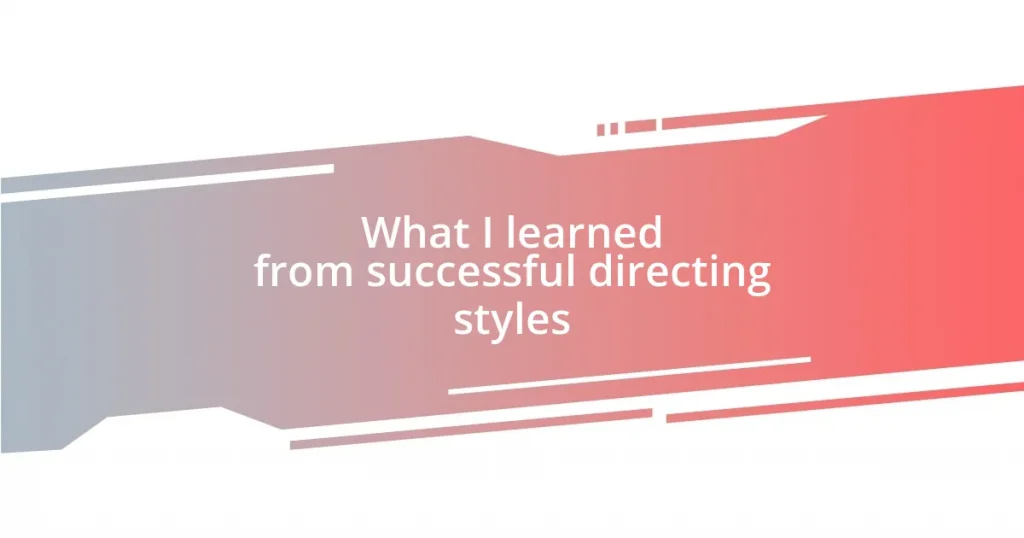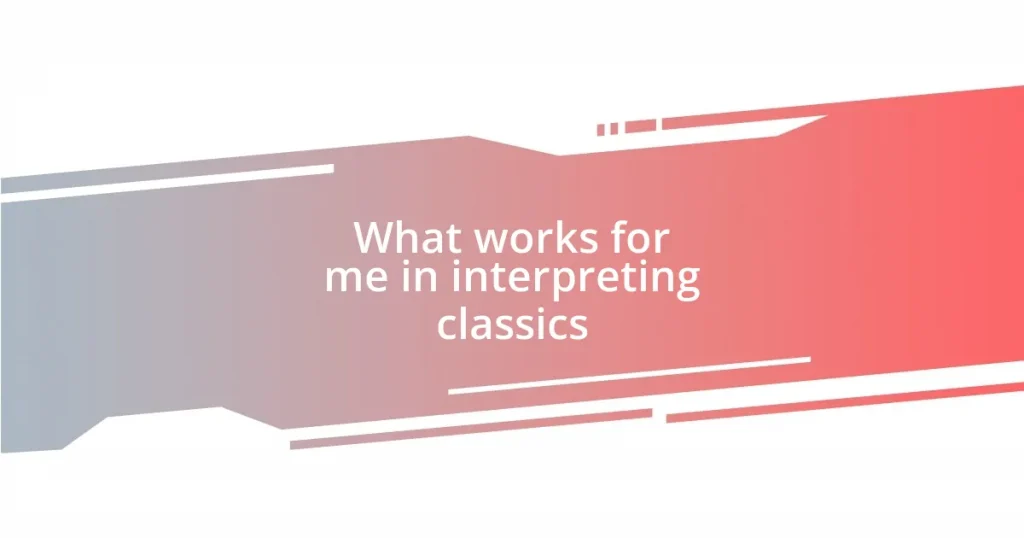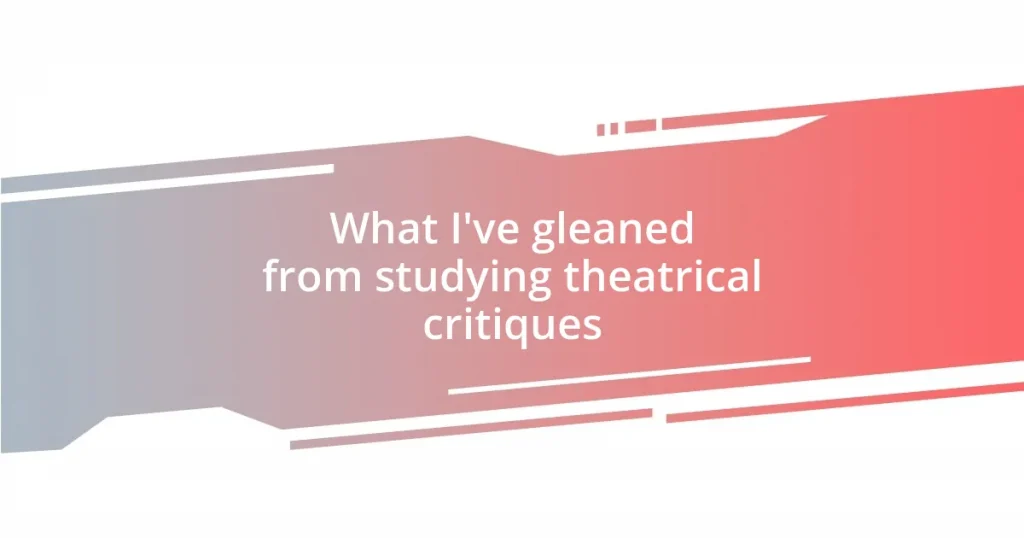Key takeaways:
- Subtext enriches storytelling by conveying deeper emotions and conflicts left unspoken, akin to an iceberg’s hidden mass.
- Effective subtext can be identified through character actions, body language, and contradictions between spoken words and feelings.
- Dialogue infused with subtext transforms ordinary interactions into powerful moments, enhancing character depth and reader engagement.
- Maintaining character consistency is vital for impactful subtext; over-explanation or excessive ambiguity can detract from emotional resonance.
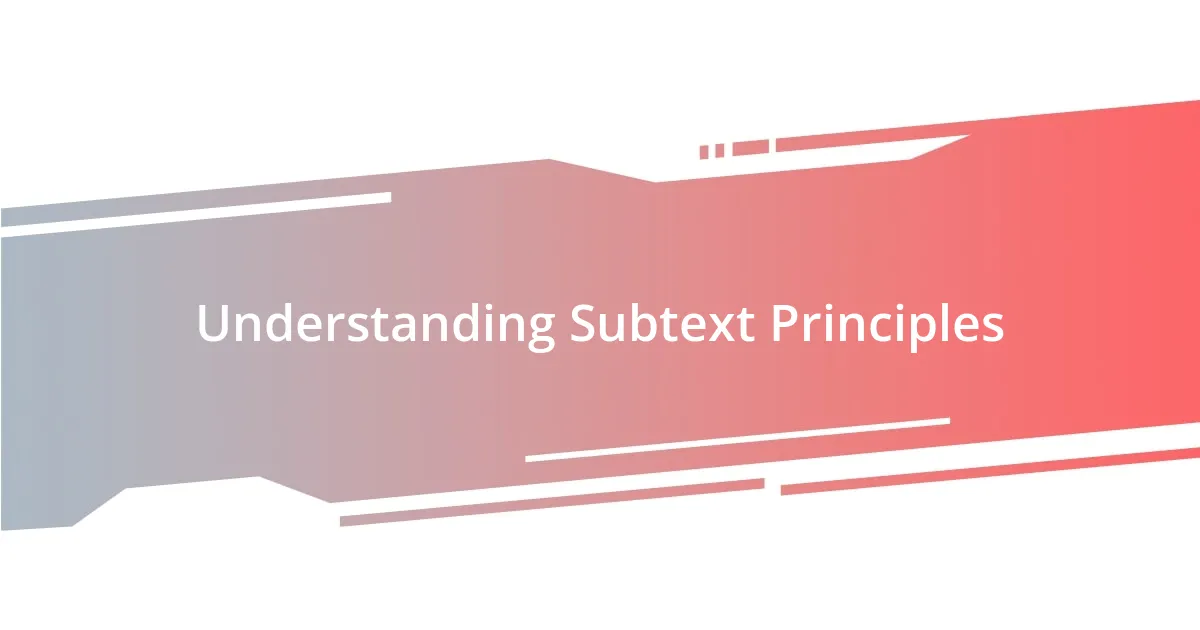
Understanding Subtext Principles
Subtext is like the hidden flavor in a delicious dish – it enhances what’s already there without being overt. I remember when I first delved into writing, I thought everything had to be explicitly stated. But as I honed my craft, I realized that what’s unsaid often packs more punch. Have you ever noticed how a single glance can convey volumes? That’s the power of subtext.
In storytelling, subtext operates like an iceberg; what you see on the surface is just a fraction of the whole. Some of my most impactful scenes came together when I focused on what my characters weren’t saying. When I crafted dialogue that hinted at deeper feelings of doubt or love, it drew my readers in, inviting them to read between the lines. Isn’t it fascinating how much can be communicated through silence?
Understanding the principles of subtext involves recognizing the emotional landscape underlying interactions. I often ask myself what my characters really want versus what they’re saying out loud. One time, I wrote a scene where a character apologized, but their body language screamed resentment. It revealed a rich undercurrent of conflict, and I learned that those layers make stories feel more real and relatable. Just think about the last conversation you had; how much was left unspoken?
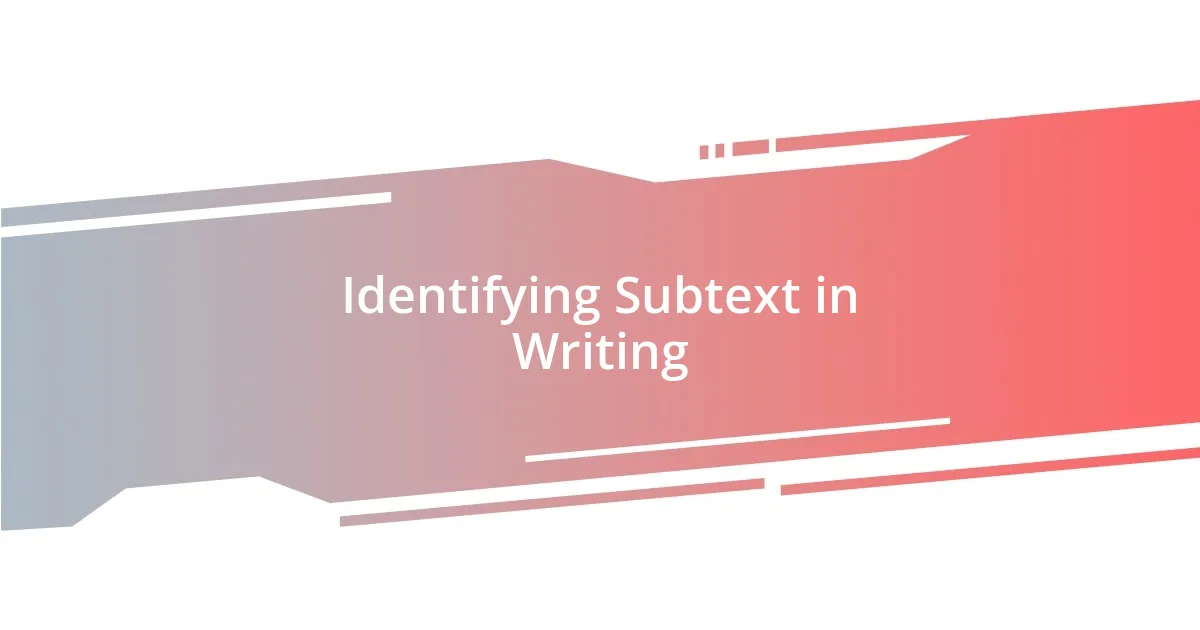
Identifying Subtext in Writing
Identifying subtext in writing can be a rewarding endeavor. I recall a time when I was editing a short story and noticed how the main character’s nervous habits hinted at deeper insecurities. The way they fidgeted with their ring while discussing their promotion painted a vivid picture of their anxiety without needing to spell it out. This experience taught me to pay attention to gestures and expressions that imply more than what is verbally expressed.
To effectively identify subtext in your writing, consider these key elements:
- Character actions: Observe what characters do while they speak; actions often reveal conflicting feelings.
- Dialogue choices: Look for what characters avoid saying; silences and stumbles can indicate hidden meanings.
- Body language: Posture, gestures, and facial expressions provide additional context and emotion.
- Symbolism: Items or settings that recur can symbolize themes or conflicts without explicitly stating them.
- Contradictions: Conflicts between what’s said and what’s felt can heighten the emotional stakes of a scene.
Embracing these aspects allows you to craft layers of meaning that resonate with your audience.
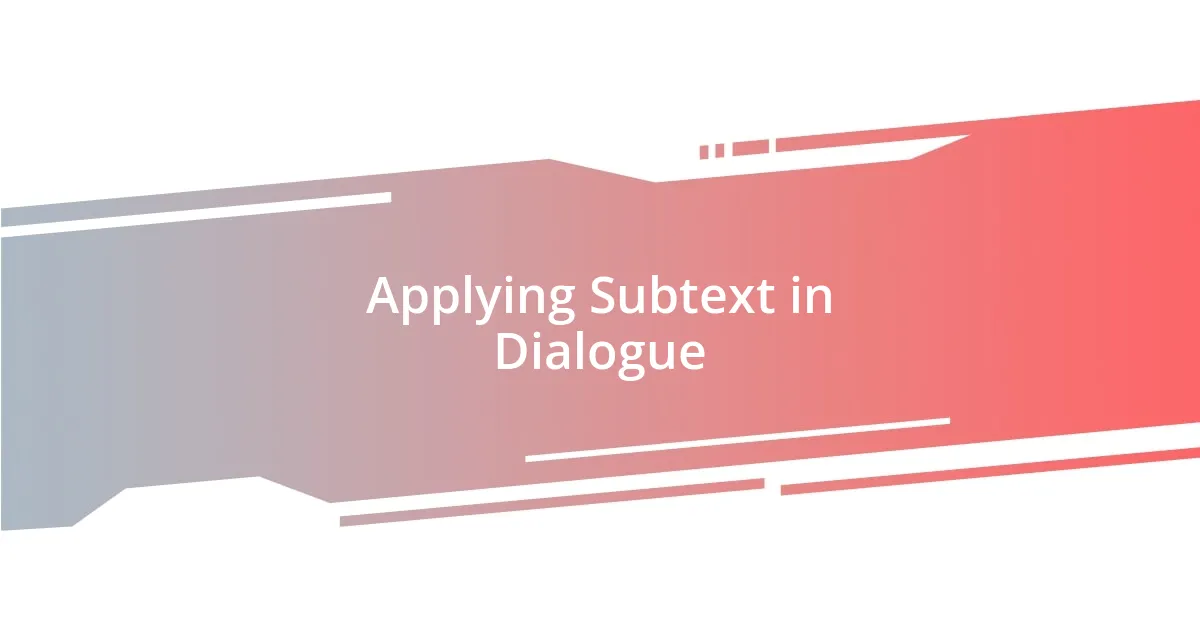
Applying Subtext in Dialogue
Applying subtext in dialogue can transform a basic exchange into an unforgettable moment. I remember writing a scene between two friends who were tiptoeing around a sensitive topic. They were discussing a casual outing, but the tension was palpable; their hesitations and half-hearted enthusiasm were the real story. This taught me that the way characters speak—what they choose to say and what they keep hidden—can create an emotional ripple effect that engages readers on a deeper level.
Consider how subtle choices in word selection and phrasing can hint at emotions. In one instance, I crafted a conversation where a character repeatedly asked, “Are you okay?” Each time was accompanied by a short pause, a shift in tone that revealed escalating concern, unbeknownst to the other character. This layering of subtext conveyed a profound sense of care, and I found that readers connected with the implied anxieties rather than the overt words.
To make subtext in dialogue impactful, it’s essential to balance clarity with ambiguity. I’ve often drawn from real-life conversations—those moments when friends share a laugh, but the underlying sadness in their eyes tells a different story. When I apply that observation to my writing, it deepens character development and creates a narrative that feels authentic.
| Element | Application in Dialogue |
|---|---|
| Character Intent | What they say vs. what they mean |
| Emotional Tone | Subtle inflections indicating feelings |
| Body Language | Gestures that contrast spoken words |
| Silence | Pauses that convey hesitation or conflict |
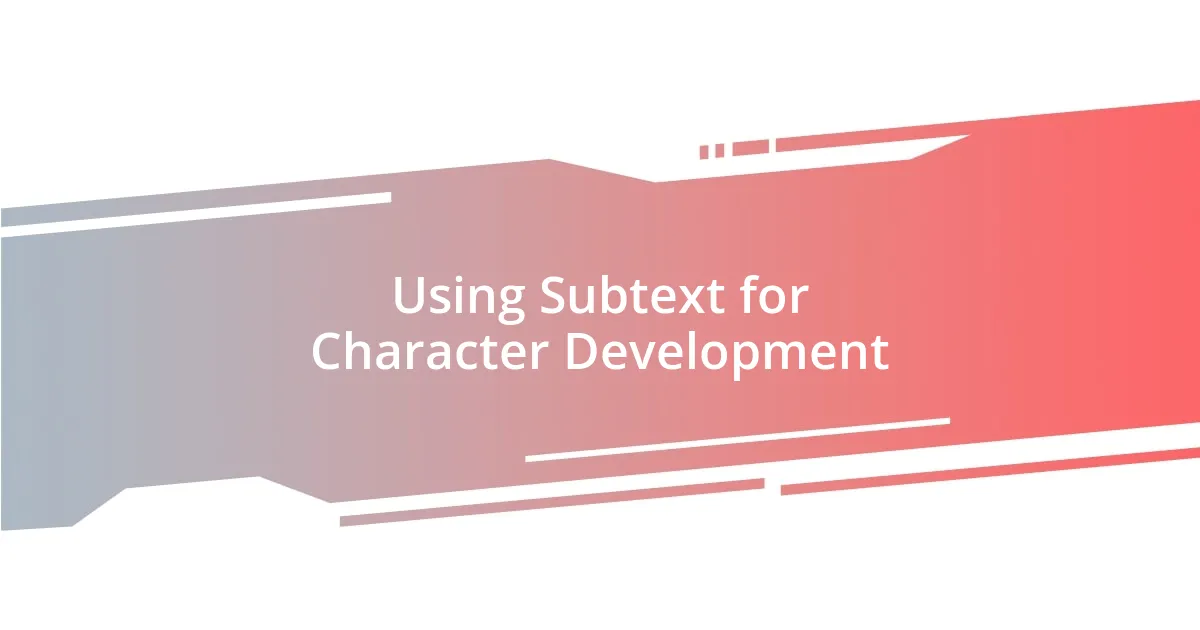
Using Subtext for Character Development
When I think about using subtext for character development, I often recall a scene I wrote where a character found an old family photo. Instead of expressing sadness directly, they stared at it, their fingers tracing the edges, while their companion offered harmless chatter. The juxtaposition of the character’s internal struggle against a vibrant backdrop of conversation illuminated the emotional depth. It was a reminder that sometimes, what characters don’t say reveals more about them than their words ever could.
In crafting multi-dimensional characters, I’ve found that their relationships often thrive on subtext. I remember writing a moment between a father and daughter who hadn’t seen each other in years. Their smiles were warm, yet an undercurrent of tension lingered. The father’s nervous laughter and the daughter’s forced cheerfulness painted a vivid picture of their unresolved issues without overtly addressing them. This experience taught me that allowing characters to express conflicting emotions subtly can enrich their narrative arc and keep readers invested.
When developing your characters, I believe it’s important to ask yourself: what do they really want? I learned this while exploring a protagonist whose desire for approval clashed with a fierce independence. Instead of stating this conflict outright, I let their choices speak volumes—like when they accepted a promotion at work despite secretly feeling unworthy. Through these layered expressions, I was able to show how subtext serves not just to construct character dynamics, but also to create a profound connection with the audience as they begin to unravel those complexities.
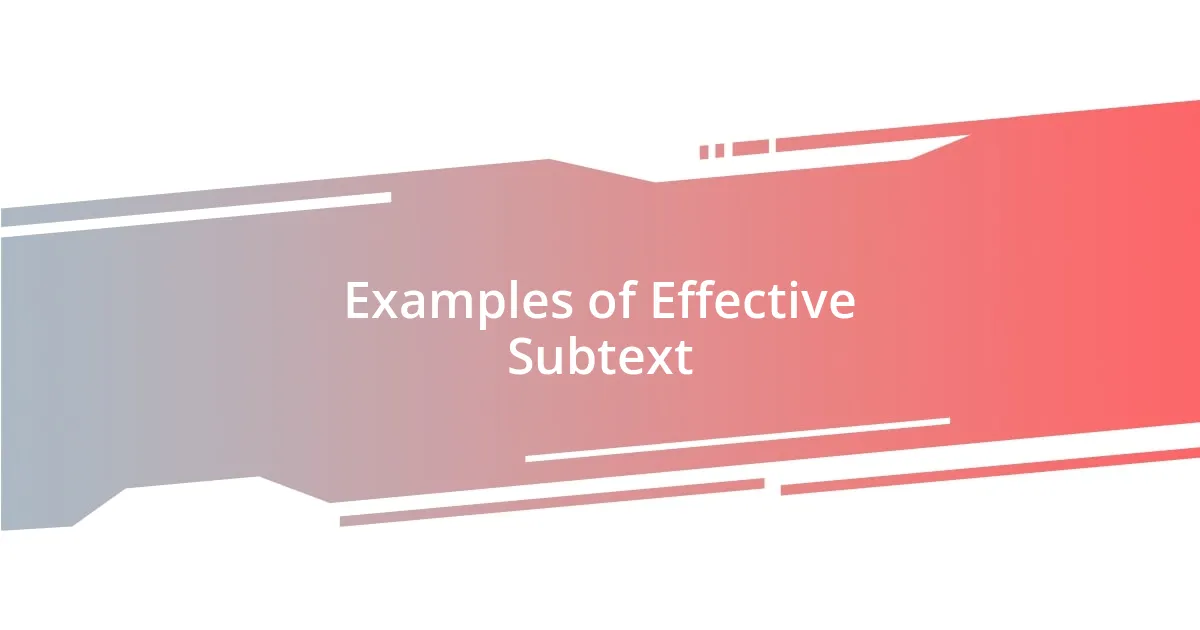
Examples of Effective Subtext
Exploring effective subtext often reminds me of the power of setting and its unspoken implications. I once wrote a scene where two characters met in a diner that had seen better days. The chipped paint and flickering fluorescent lights mirrored their strained relationship. As they exchanged pleasantries, the backdrop of their surroundings—the lingering grease and the hum of awkward silence—spoke volumes about their unspoken tensions. Doesn’t it make you wonder how much a setting can influence the way we perceive the characters’ feelings?
Another effective example I remember is using food as a metaphor for emotional conflict. In one of my stories, a couple shared a meal that consisted of their favorite comfort food. But instead of enjoying it, their mumbled conversation was filled with pauses and averted gazes. As they picked at their meals, the food lost its warmth, just as their bond felt strained. This taught me that the details—like how a character interacts with their environment—can subtly foreshadow deeper issues, creating a more engaging narrative for the reader to puzzle over.
In my experience, body language often conveys subtext more powerfully than dialogue. I recall writing a scene where a character avoided eye contact during a heart-to-heart conversation. Instead of stating their discomfort, I described how they fidgeted with their watch while nodding along. Those little gestures amplified the underlying feelings of fear and uncertainty. Doesn’t it resonate when you see someone say one thing but their body tells a different story? This interplay between words and physical cues can reveal layers of meaning that invite readers to engage actively with the characters’ journeys.
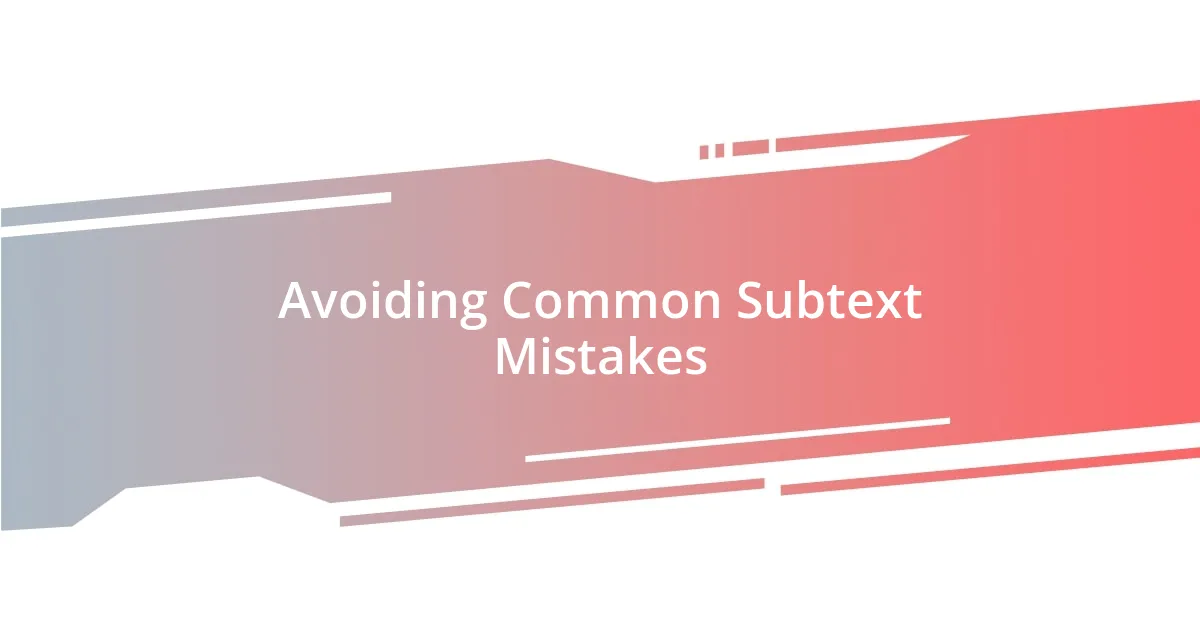
Avoiding Common Subtext Mistakes
One common mistake I often encounter when incorporating subtext is being too obvious. I remember when I first experimented with subtext in a story; I thought I needed to drop hints loudly to convey tension between two characters. Instead of keeping it subtle, I had them constantly rolling their eyes or making snide comments. Looking back, I realized that this over-explanation stripped the scene of its nuance. Subtext thrives in the unsaid, so I learned that too much clarity diminishes its impact.
Another pitfall is the tendency to make subtext too cryptic. I once wrote a scene laden with metaphors, thinking I was being clever. However, a few readers mentioned feeling lost, struggling to decipher what I was trying to say. This feedback reminded me that while ambiguity can be powerful, it should never overshadow the message. It’s crucial to strike a balance, allowing enough context for the reader to grasp the underlying emotions without spelling everything out.
Lastly, I’ve found that neglecting character consistency can undermine subtext dramatically. I remember crafting a dialogue where a usually confident character suddenly became timid. It baffled my beta readers, as they couldn’t reconcile this new behavior with what they already knew. This taught me that grounding subtext in character development is essential. When characters express feelings that align with their established personalities, it deepens the meaning and enhances the overall storytelling experience. What do you think? Isn’t it fascinating how staying true to a character can transform a simple interaction into a rich tapestry of emotions?
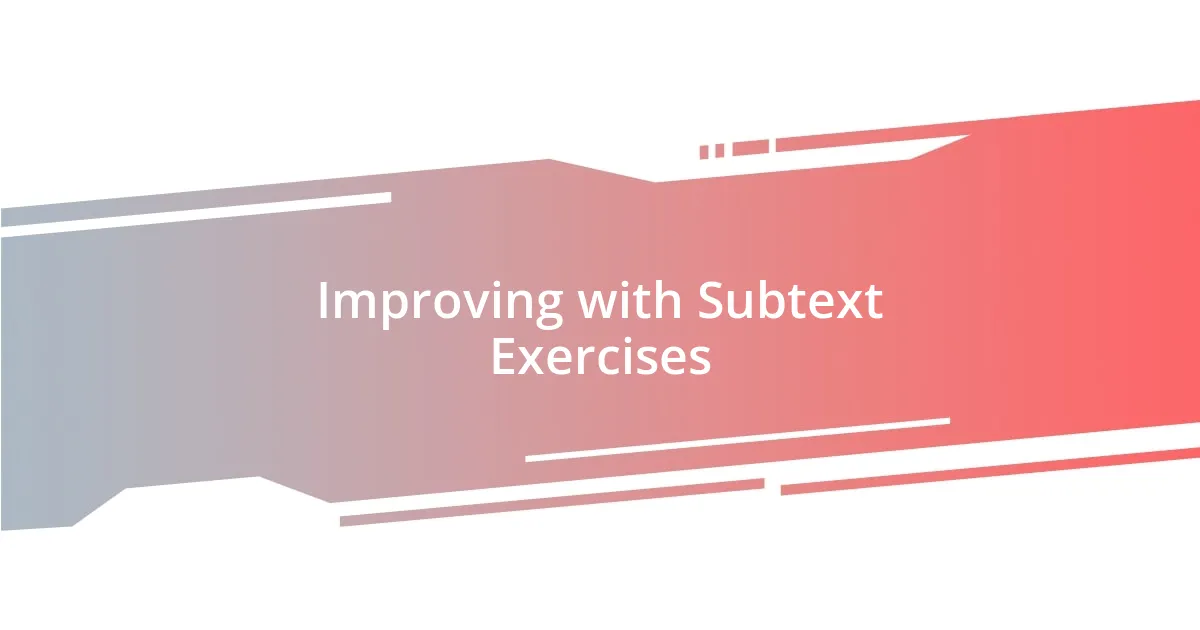
Improving with Subtext Exercises
In my journey with subtext exercises, I’ve discovered that writing prompts can be transformative. I once challenged myself to write a scene using only dialogue, completely eliminating narrative exposition. This forced me to rely on the unspoken cues in characters’ voices and pauses, which made me realize how much emotion can be expressed without directly stating it. Have you tried a similar exercise? It’s eye-opening to see how much depth you can create by leaning on subtext.
Another effective exercise I recommend is rewriting a well-known scene from literature or film, but focusing solely on subtext. I remember reworking the iconic meeting between Elizabeth Bennet and Mr. Darcy. Instead of their direct conversation, I emphasized their body language and subtle glances. This gave me the chance to explore how silence can be just as eloquent as words, allowing readers to feel the tension between them without overt statements. This practice enhances our ability to convey nuanced emotions in our own writing.
Lastly, I’ve found that reading aloud can significantly enhance my understanding of subtext. When I read my work, I pay close attention to the rhythm and pauses, identifying where I can layer in emotions without cluttering the dialogue. I recall a moment when I stumbled over a line, realizing it didn’t quite convey the underlying sadness I intended. By adjusting my phrasing and delivery, I was able to better capture the essence of the unspoken—and it made all the difference. What about you? Have you ever noticed how reading aloud can reveal hidden layers you might have overlooked?

